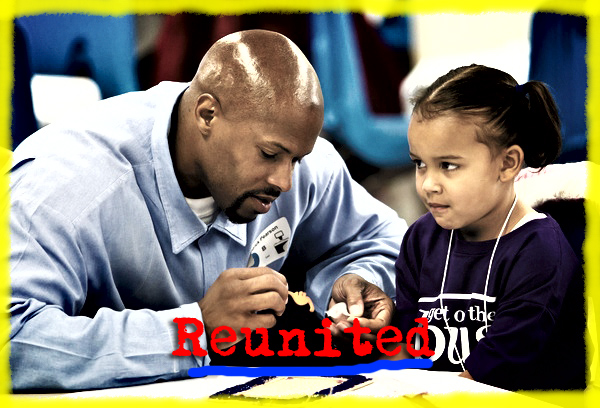“GET ON THE BUS” TAKES KIDS TO SEE LOCKED UP DADS FOR FATHER’S DAY
LA’s Center for Restorative Justice Works is transporting over 1,000 kids to see their incarcerated dads to celebrate Father’s Day this year. The program, Get On the Bus, will facilitate the father-child reunions at six men’s institutions throughout the state over a period of fifteen days.
MSNBC has the press release. Here’s a clip:
Executive Director Kathy Culpepper said, “Get On The Bus exists to unite children with their parents in prison. Distance is the number one reason these children have been unable to see their parents. Most parents in California prisons are incarcerated more than 100 miles away from their children. These children miss their parents terribly and need to know that they are not abandoned. Regular visitation helps to decrease the negative impacts of parental incarceration on the children. For many of these children, this is the only time during the year that they will see their father.”
Approximately 200,000 children in California have an incarcerated parent and live with relatives or are in foster care, according to the California Department of Corrections and Rehabilitation.
As you may remember, WitnessLA has posted about this genuinely cool program before for Mother’s Day. You can check it out here.
RACE FACTORS INTO SENTENCING JUVIES, STUDY SAYS
Stanford researchers concluded in a recent study that white Americans are more likely to support heavier sentences if they imagine the juvie defendant to be black. (Really.)
The National Journal’s Doris Nhan has the story. Here’s a clip:
The study, conducted with about 650 white Americans, looked at whether switching a juvenile defendant’s racial description to either black or white would change whether the participant was more likely to find the juvenile to be responsible and to support a harsher punishment. The researchers found that it did.
Participants who had read “black” were significantly more likely to say that the individual was responsible and thus more supportive of a life in prison without parole sentence, said Aneeta Rattan, lead author of the study and a post-doctoral research scholar at the university.
“Using this one word to cue race got people to change their attitudes and perceptions to policy regarding juveniles,” Rattan said, later adding, “We really have to ask how much bigger that effect can be in the real world.”
NEW FOSTER CARE BILL BRIDGES GAP BETWEEN FOSTER CARE AGENCIES AND EDUCATION
The Congressional Caucus on Foster Youth has presented a new piece of federal legislation that, if passed, would make it easier for schools to release critical education-related information to foster kids’ social workers. (We want to respect kids’ privacy, but foster care agencies are acting in lieu of parents, so it shouldn’t be this difficult for them to get information from schools.)
The Chronicle of Social Change’s Daniel Heimpel has the story. Here’s a clip:
For experts, advocates and administrators, the new legislation is an opportunity to change the way foster care and education work together towards the shared goal of improving educational outcomes for foster youth. Further, the A+ Act would allow for inter-agency data sharing, which experts agree would increase the chance of successful interventions to improve the dismaying educational outcomes students in foster care face.
A comprehensive fact sheet on educational outcomes for foster youth, compiled by the National Workgroup on Foster Care and Education, provides a clear picture of just how poorly these students perform compared to their peers. About half of students in foster care completed high school by age 18, compared with 70 percent of the general population, according to a review of multiple studies. And research shows college completion rates for foster youth range anywhere from one to nine percent, far lower than the census estimate of 28 percent of people in the general population who hard earned at least a four-year degree by age 25.
“When are we going to quit talking about stats and start implementing the solutions that put our [foster] kids on par with their peers,” says Mary Cagle, the Director of Children’s Legal Services for Florida’s Department of Children and Families.


Boring